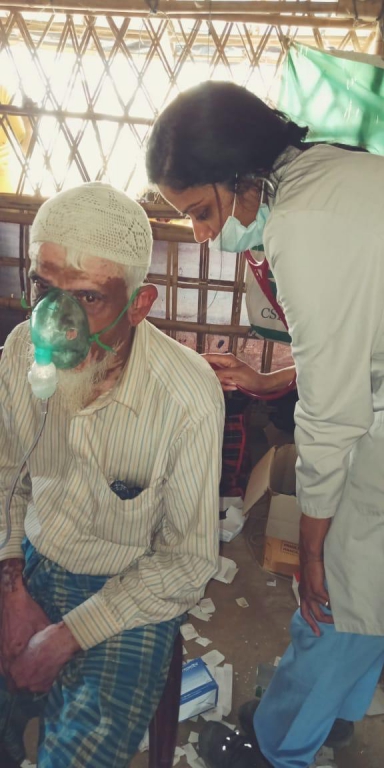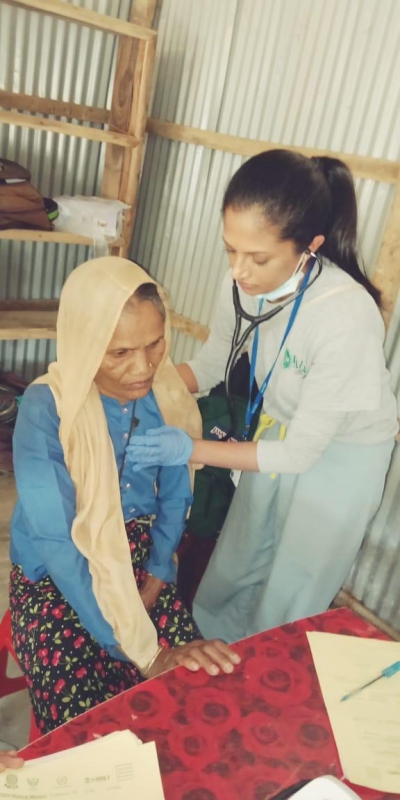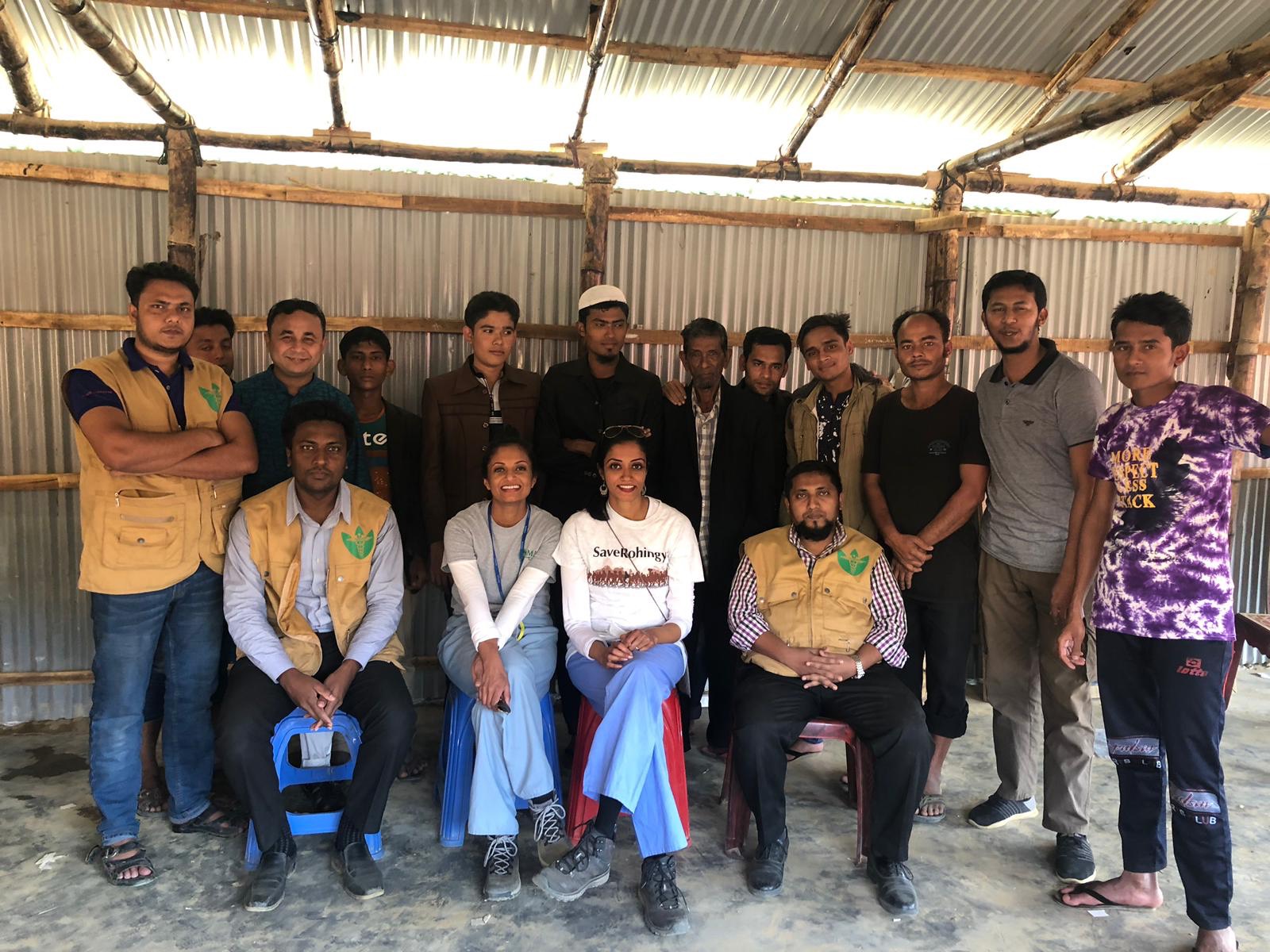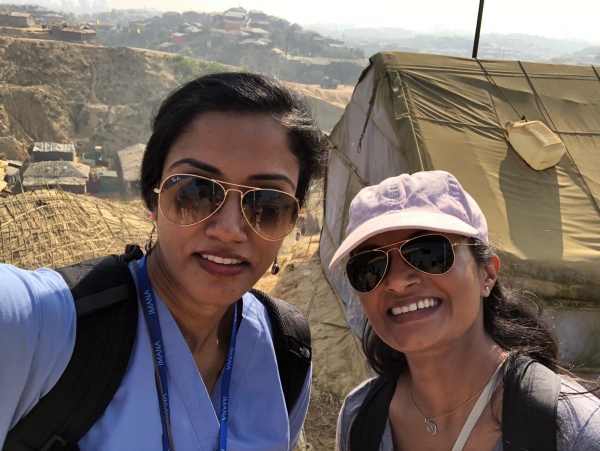IMANA VOLUNTEER STORIES
From the South Side of Chicago to Cox’s Bazaar: Two Chicago Doctors Traveled Across the World to Help Others
April 17th, 2019
Chicago – Drs. Geetha Govindarajan and Nadia Momin dedicate their careers mainly to helping others, working as providers at FriendHealth, a federally qualified health center on the South Side of Chicago. There, they provide quality care to the local medically underserved population. Dr. Govindarajan, an internal medicine physician, and Dr. Momin, a family practice physician, used vacation time to head across the globe to Bangladesh and help Rohingya refugees back in early February.
Dr. Govindarajan had worked in medical relief before with other organizations in Haiti and Ethiopia. She also goes to India regularly to do mobile outreach in villages and provide specialty care. Dr. Momin had done medical relief in Honduras, Cameroon, Guyana, and Haiti.
“It is hard to break away from our work, but we both wanted to do something,” said Dr. Govindarajan. Through word of mouth, they chose to go through IMANA Medical Relief (IMR). She also had a friend familiar with Cox’s Bazaar, where the Rohingya camps are located. “The assistance preparing for the mission helped guide us. The booklet they sent was very well-done, impressive, and helpful.” From a volunteering perspective, things were very well-organized.
They did plenty of research on the Rohingya crisis. “I didn’t know much about the history and issue in the region beforehand, and was my first time working with refugees,” said Dr. Govindarajan. Even though she had prepared for it mentally, no amount of reading could have prepared them for what met their eyes in those camps.

Dr. Govindarajan treats a Rohingya refugee.
Dr. Govindarajan actively journaled to make sense of her experiences. “To think these Rohingyas had identities: homes, went to schools, had jobs, and then one day they are uprooted, land in a new country with no identity and face an uncertain future in a camp with limited amenities. My heart skipped a beat each time I thought of it.”
The patients communicated their symptoms mostly in Rohingya, which was ably and professionally translated by the young translators that worked with IMANA, but sometimes words failed as they took to non-verbal cues of crying and long periods of silence. As the doctors wondered about their impact, gentle reminders in the form of patient encounters where diagnoses made helped avert long-term sequeale brought solace to the question of why they were there. They learned about the collective struggle of Rohingyas through the stories the translators shared, and young patients who were eager to speak and share poems. The translators also taught them how to write words in Rohingya script.
“We left camp the first day feeling like we were not doing enough,” said Dr. Momin. “Were we making an impact?” They had a conversation on this and decided that to compensate for the language barriers, they would go beyond focusing on the symptoms and complaints and do full head-to-toe exams on each patient: heart, lungs, feet, eyes, mouth, etc., and that way, they’d have more of a physical connection. “We’re here for you even though we can’t speak the language; through touch we communicate.”
“A lot of patients’ mental health issues were left undiscussed. There is a stigma,” said Dr. Momin. “You could tell they had something going on but couldn’t share.”
“’What impact did I have on these patients?’ constantly runs through your head,” said Dr. Govindarajan.
“Sometimes, all I could offer at times was a listening ear- I let them speak or cry by creating a safe space, and hoped that healing happened in that one-way exchange. As we closed the camp, we offered our gratitude to the team that had allowed us to serve alongside them. One of the young Rohingya translators spontaneously stood up and spoke in broken Hindi and English, a language we could understand:
‘I am thankful to Allah that you flew around the world to be with us and serve our community. Thanks for not forgetting about us. I pray for yours and our well-being to the merciful Allah.’”

Dr. Momin treats a Rohingya woman.
It was an emotional moment for the entire team that had worked hand-in-hand for the week as they took in his words in silence, fighting their tears and reveling in an indelible bond that had formed unbeknownst to them.

The doctors and local translation team.
This mission not only functioned as an opportunity to help others but also renewed why the Chicago doctors went into medicine. “I feel blessed to have gone,” said Dr. Govindarajan.
“This brought a whole different perspective. Even though we serve an underserved population here in Chicago, it’s still so easy to get resources like imaging, labs, etc.,” said Dr. Momin. “Being underserved here is nothing like over there.” They shared photos of the mission with photos and staff when they returned. “It was an eye opener for them. We’re so lucky at the end of the day — we don’t have to worry about running water, shelter and food.”

Drs. Govindarajan (left) and Momin (right)
Drs. Govindarajan and Momin are already exploring ways to give back even more to the less fortunate.
To donate to SaveRohingya medical missions, click here.
SUPPORT IMANA MEDICAL RELIEF MISSIONS: imana.org/donate